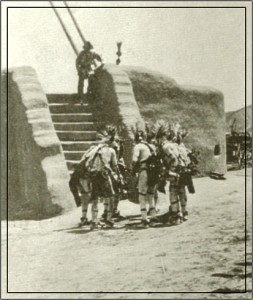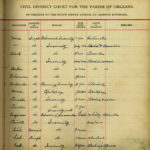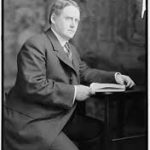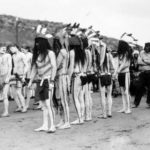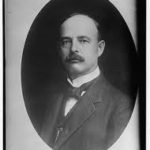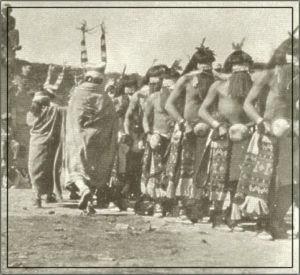
Hopi Clowns Next to a Line of Dancers in the Long Hair Dance, 1912, courtesy Museum of the American Indian, Heye Foundation
Though the federal government wanted to suppress anything that kept Native Americans from assimilating into white culture, dancing seemed to be of special concern. Dances were central to many traditional rituals and ceremonies, and therefore, suspect.
Even worse, Native American dances were not restrained and constrained like the sedate waltzes of polite white society, but instead, exhibited considerable movement and exhibition.
The Bureau of Indian Affairs gathered testimony from (white) eyewitnesses of Native American dancing into a Secret Dance File which was considered obscene because of the graphic descriptions it contained.
Here is a quote concerning a Hopi dance: “Two clowns dressed as women came into the court. Their skirts were very short, not over eleven inches long. The men clowns would go up to them and try to pull the skirts down a little.”
The passage went on, describing how the clowns appeared to peek under the skirts and so on, without underscoring that all the participants were men. Other witnesses did describe scenes that seemed to simulate intercourse, which were disturbing to the officials who thought these dances would promote immoral behavior. Commissioner of Indian Affairs Charles Burke eventually signed Circular 1665, banning these types of dances as well as “any disorderly or plainly excessive performance.”
